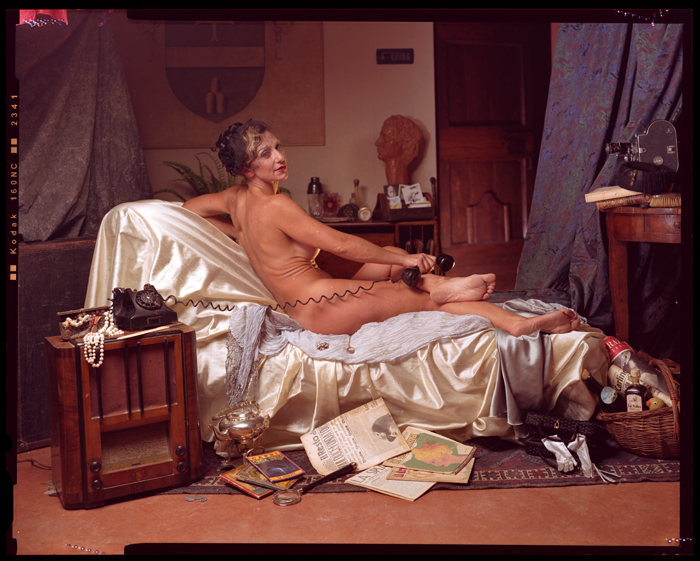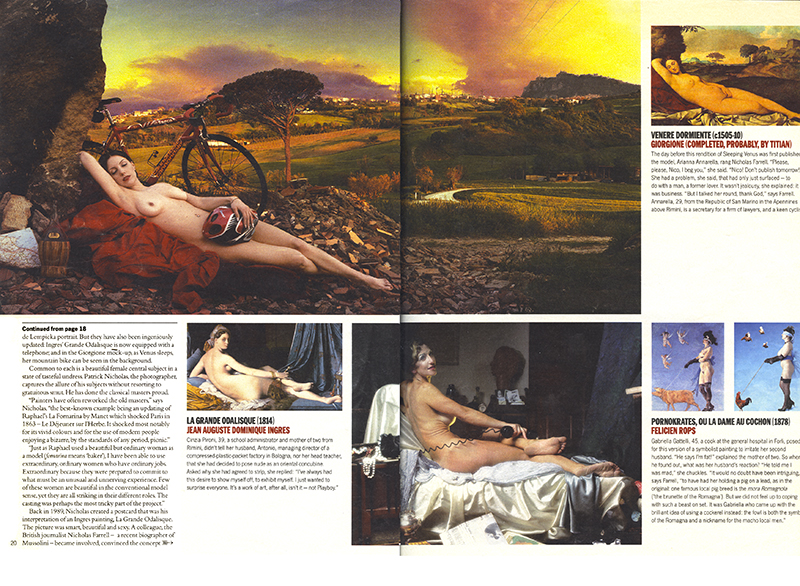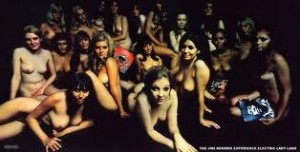Fascisca
This is the second photograph I have done based on Ingres’ Grande Odalisque (the other is Casalisca). Ingres is one of those artists who can give a certain comfort to artists who have passed middle age as several of his most famous works were painted towards the end of long life. The Turkish Bath for instance, which in the nineteen-sixties at the height of psychedelia, was the source for the cover of Jimmy Hendrix’s Electric Ladyland.

Ingres, La Grande Odalisque
It is one of his most sensual and famous works. He painted well into old age.He married a woman of 43 when he was 71 which rejuvenated him, indeed he finished his famous, and scandalous, Turkish Bath when he was 83, just three years before his death. One of the reasons I feel drawn to Ingres is because we share an interest in beautiful fabrics. He, like Tissot later on, loved the stuff that his sitters’ dresses were made of and used expensive and exotic material to drape around his nudes. Some of my favourite photographic assignments were for textile manufacturers so I had the opportunity to borrow some beautiful cashmeres and silks to dress the sets of both this photo and Casalisca.
Ingres’ desire was to make his name as a History painter for which he is largely unknown, he became respected for his portraits, but he is loved for his orientalism – the odalisques and the hamaam. He combined the fascination for the oriental with a very French interest in fabrics. There is also something haunting in his nudes, this man who loved playing the violin turned his women into sensual cello shapes; there is something haunting in their looks, something in their shapes, something almost in their touch.

Cinzia
Ingres was and still is considered a reactionary painter, yet he influenced Degas, and more bizarrely still, Matisse, Picasso and the photographer Man Ray. Perhaps it is rather fitting then that I should have decided to set my second Odalisque in the fascist era. For this scene which is set in a specific year I needed some props. I went to Mussolini’s former home at Villa Carpena, near Forlì where his widow lived until the early eighties, a place with a very inhabited feel about it, and asked if I could borrow some bric-a-brac to set the scene. The curators of the villa, now a museum, kindly lent me the newspapers and magazines, both from May 1936, some original postcards and even Mussolini’s very own black fez. The papers refer to Italy’s new empire in Abyssinia.

5×4″ out-take
Mussolini, squat, bald, rustic looking and sounding, was not an attractive man, but he was attractive to women. He had the qualities of a middle eastern potentate: absolute power and voracious appetite – especially for respectable women. I chose the model, 43 year old Cinzia, because she seemed to have those qualities that would have especially appealed.

The Sunday Times magazine
Clothed only in a delightful period hat with a veil, she languorously waits in her drawing room. Half haute-bourgeois, half odalisca; I have called her Fascisca.
To set yourself in the right mood listen to 1930s song, Ma le gambe piacciono di più by the Lescano trio
2019 update of Fascisca: A sign of our Times
In 2019 I updated this picture to adapt it to our changing times

nostalgic fascism
Behind the Scenes. I used a Sinar 5×4 view camera as well as the Mamiya. It was shot in a Villa just outside Bologna. This picture has been published in a number of magazines.
Below is a behind the scenes video containing an interview with 43 year old Cinzia who works in a High School by journalist Nick Farrel.
“What does your husband think ?”
“I haven’t told him yet!”
Make-up: Simonetta Baletti of Art and Make-up



